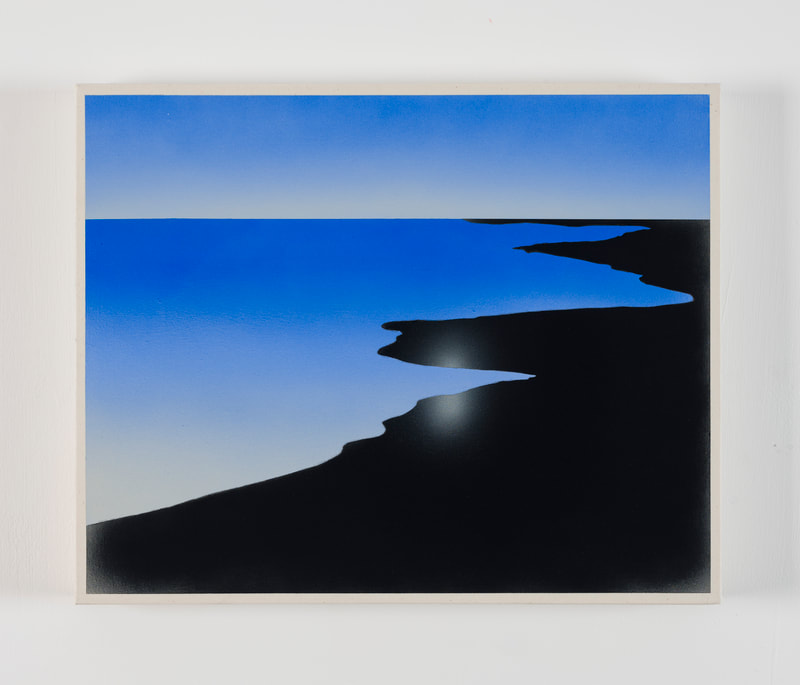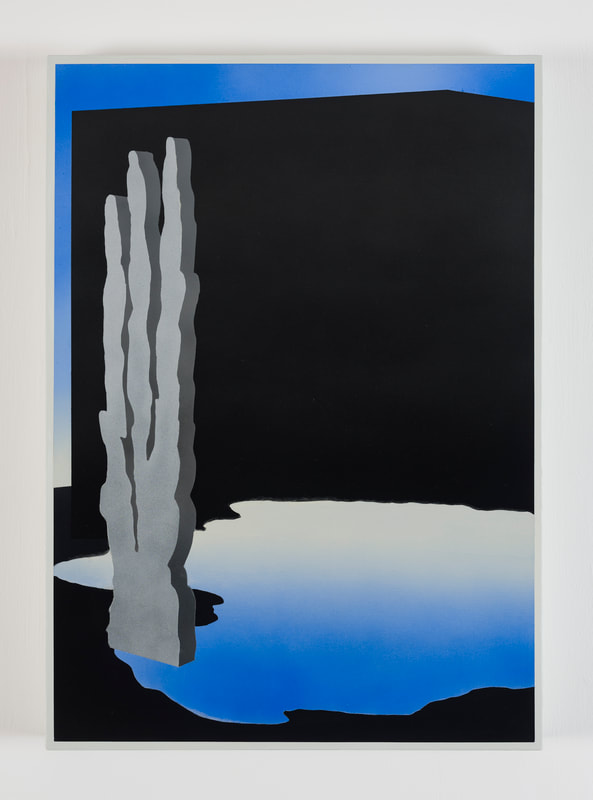Dony CHENG Hung: Finding Rest on the Highway 鄭虹《在公路上尋找休息》
|
|
Dony CHENG Hung: Finding Rest on the Highway 17 February – 16 March 2024 Gallery EXIT presents Dony Cheng Hung’s solo exhibition ‘Finding Rest on the Highway’, showcasing the artist’s recent paintings, animations and installations. Taking place from 17 February to 16 March 2024, the exhibition builds upon Cheng’s aesthetics and methodology of her two previous exhibitions, ‘Elaboration of the reflected lights’ (Gallery EXIT, 2022) and the 2023 CUHK Fine Arts Master’s Graduates Exhibition. Utilising the entire gallery space, with painting, animation, installation and projection, the artist constructs a conceptual landscape from her own imagination. Cheng’s artistic practice is also a way for her to understand her surroundings, as she loosens the meaning of objects and researches the connections between meanings. The exhibition unfolds with paintings of the blue sky. Immersed in pale yellow light, projected and reflected throughout the space, the viewer moves through transparent walls, columns and plant-shaped sculptures, arriving at the more sombre monochrome paintings, in a journey from light to darkness. At the end of the journey, two rotating animations illustrate the metamorphosis of objects into painting motifs. The animations confer a temporality upon the images, while the installation transfers the surrealist two-dimensional space on the walls to the three-dimensional space of the exhibition venue. Through these devices the artist attempts to construct a coherent liminal space that allows viewers to experience being surrounded by an environment. Using acrylic as her chief medium, Cheng creates a smooth pictorial surface dominated by black, white and blue tones, wherein details and textures of the objects depicted are erased, forming an abstract, dematerialised, static pictorial world. For the artist, this is a technique to focus on the pictorial surface, to achieve a pure and minimalist expression through elimination, to look for the essence of things and the subjective reality according to herself. Cheng simulates the flatness of computer graphics, using an airbrush to create a flawless gradient blue sky. The black parts, such as the lakes and water bodies, are painted in Musou Black, a kind of light-absorbing paint, to create a sunken visual effect, an illusion of inertia. At the same time, reflected light upon these dark surfaces points to some light source, a visual paradox. Cheng observes the different forms in the urban structure, stripping them down and turning them into abstract elements which she superimposes upon the pictorial surface to form separate yet interreferencing conceptual landscapes. Like the soul of the city, the floating cube is the abstract form of man-made structure, and the straight lines of the cube man-made values, such as efficiency and control. Two cubic pillars suggest an invisible straight line between two points, and the lost meaning in between. Milan Kundera wrote in his novel Immortality: ‘A highway has no meaning in itself; its meaning derives entirely from the two points that it connects…… A highway is the triumphant devaluation of space, which thanks to it has been reduced to a mere obstacle to human movement and a waste of time.’ Contrary to this are plants and lakes, which symbolise the curves and motions of nature. Found in various positions of the paintings, the light source which is the sun, watches over the world at all times. Arising from light, shadow, the oblivion devoid of function, brings people out of the straight highway mode, to find rest in the twists and turns of shadows. The ancients had no notion of the highway nor efficiency but devoted time in the pursuit of meaning. Through imagination, Cheng restores a landscape before buildings, in the same way the Greek philosophers restored the world to its basic elements, the primal human nature. At the same time this is also an imaginary future, where only straight lines remain in the world, plants no longer exist and become venerated totems. The horizon line, a rarely experienced landscape for the artist, transcends time, referring to some moment before the past, or after future. |












